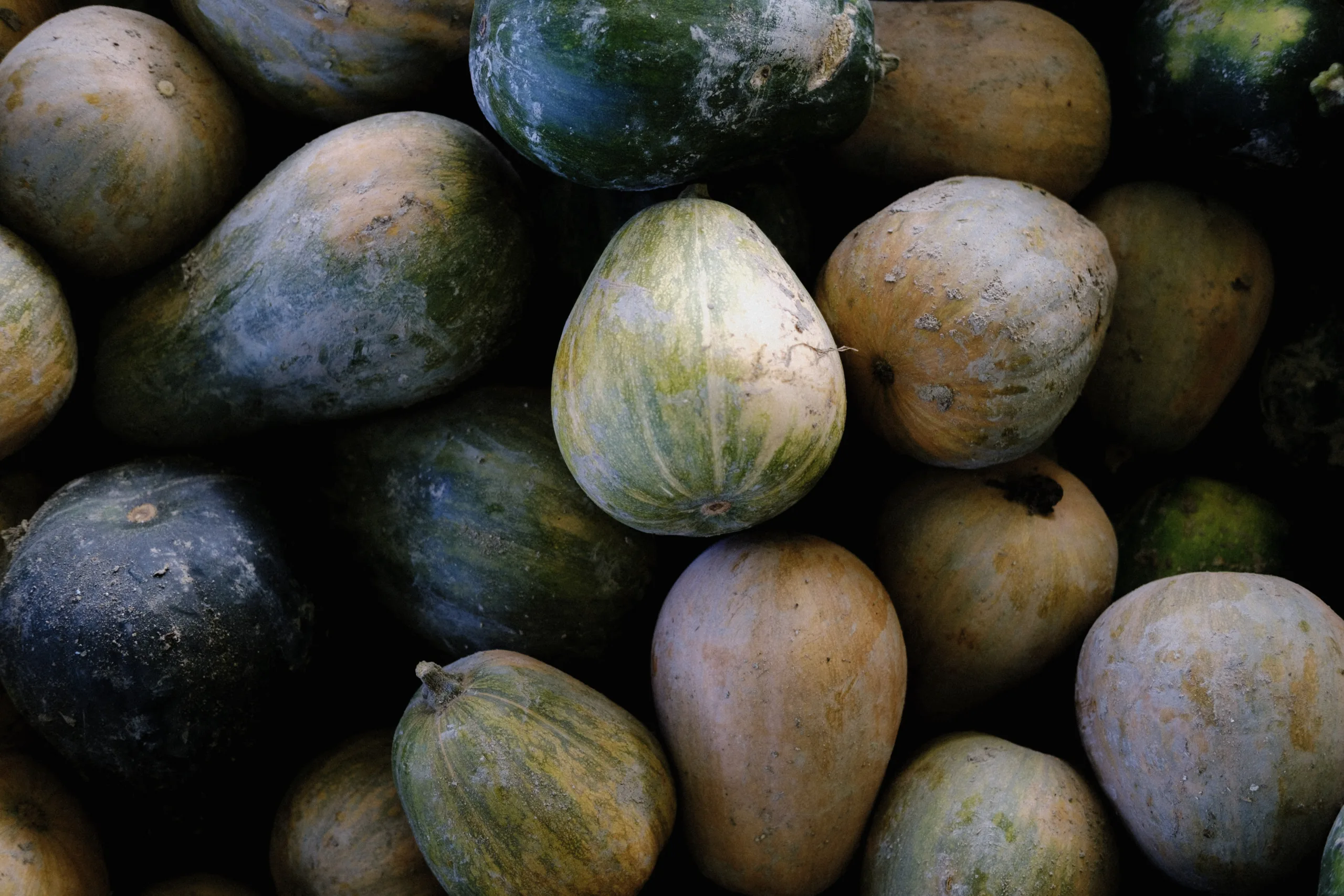Are you searching for low FODMAP recipes to include in your diet? Do pumpkins fit into that category?
Pumpkins are a popular vegetable eaten during the fall and winter months. Not only are they delicious, but they offer some nutritional benefits. But can those with FODMAP sensitivity eat them? This article will explore if pumpkins are low FODMAP, as well as how to incorporate them into a healthy diet.
Read on to find out all the information you need regarding pumpkins and the low-FODMAP diet.Yes, pumpkins are low FODMAP in small servings. A single serve of cooked pumpkin is considered to be low FODMAP, up to a maximum of 75g. Larger servings may contain higher levels of FODMAPs and should be avoided.
What is a Low FODMAP Diet?
A Low FODMAP diet is a short-term elimination diet that helps to reduce the symptoms of irritable bowel syndrome (IBS). The acronym “FODMAP” stands for Fermentable Oligo-Di-Monosaccharides and Polyols, which are certain types of carbohydrates that are found in many foods. These carbohydrates are known to be poorly absorbed by some people, leading to an increase in gas, bloating, and other digestive issues. By eliminating high FODMAP foods from the diet, it can help reduce symptoms of IBS and improve overall digestive health.
The Low FODMAP diet is typically broken up into three phases: an elimination phase, a reintroduction phase, and a personalization phase. During the elimination phase, all high FODMAP foods are removed from the diet for several weeks to give the gut time to heal. During the reintroduction phase, some of these high FODMAP foods are slowly added back into the diet one at a time in order to identify problem foods. Finally, during the personalization phase, dietary adjustments are made based on individual tolerances identified during the reintroduction phase.
The Low FODMAP diet has been shown to be effective at reducing digestive symptoms in up to 80 percent of people with IBS who follow it properly. However, it is important to note that following this type of dietary approach should always be done under the guidance of a qualified healthcare professional who can ensure proper implementation and individualization for each person’s needs.
What are the Benefits of a Low FODMAP Diet?
A low FODMAP diet offers many benefits for those suffering from digestive issues. This type of diet focuses on eliminating foods that are high in fermentable carbohydrates, which can cause symptoms such as bloating, gas, and abdominal pain. By removing these foods from the diet, it can help to reduce symptoms and improve overall digestive health.
The primary benefit of a low FODMAP diet is that it can help to reduce the symptoms associated with irritable bowel syndrome (IBS). Many people who have IBS find that their symptoms improve when they reduce or eliminate FODMAPs from their diets. Research has also shown that following a low FODMAP diet can be helpful in managing other digestive conditions such as Crohn’s disease and ulcerative colitis.
Click here to preview your posts with PRO themes ››
Another advantage of this type of diet is that it may help to reduce inflammation in the gut, which can lead to better overall health and wellbeing. By reducing the amount of fermentable carbohydrates in the diet, it can help to improve gut bacteria balance and decrease inflammation throughout the body. This could lead to improved energy levels, better cognitive function, and an overall feeling of wellbeing.
Additionally, a low FODMAP diet may be beneficial for those trying to lose weight or maintain a healthy weight. By reducing carbohydrates in the diet, it can help to reduce calorie intake and promote weight loss over time. This type of diet may also help to regulate blood sugar levels more effectively than other diets which could be beneficial if you have diabetes or prediabetes.
Overall, a low FODMAP diet offers numerous potential health benefits for those with digestive issues as well as those looking to improve their overall health and wellbeing. It is important to consult your physician before starting any new dietary program so they can ensure that you are getting all the essential nutrients your body needs while following this type of plan.
What is a Pumpkin?
A pumpkin is an orange-colored winter squash that belongs to the Cucurbitaceae family. It is believed to have originated in North America and has been grown for centuries for its edible fruits and seeds. The pumpkin is a versatile vegetable, with many culinary uses. It can be boiled, steamed, roasted, or pureed into soup or pie filling. Its seeds can be eaten raw or roasted, while its leaves and stems can be cooked and eaten as a vegetable. Pumpkins are also used to make decorations, such as jack-o’-lanterns, which are carved with spooky faces on Halloween night. Pumpkin pie is a popular Thanksgiving dessert in the United States.
Pumpkins come in many shapes and sizes and range in color from white to deep orange. The most common type of pumpkin is the “Jack-Be-Little” variety, which weighs about 4 pounds (1.8 kg) when mature. The largest pumpkins weigh up to 200 pounds (90 kg) and have a diameter of 6 feet (1.8 m). The average pumpkin weighs about 8–10 pounds (3–4 kg). Pumpkins are mostly made up of water—about 90%—and contain some dietary fiber, vitamin A, potassium, and iron.
Pumpkin plants require full sun exposure during their growing season and are usually planted in late spring or early summer after all danger of frost has passed. Pumpkins take about 90 days to mature from planting to harvesting, but this varies depending on the variety of pumpkin being grown. When ripe, pumpkins should have a hard rind that resists pressure when squeezed lightly with your fingers.
Is Pumpkin High in Fructose?
Pumpkin is a highly nutritious vegetable that is often overlooked when it comes to dietary considerations. While it does contain some fructose, it is not considered to be a particularly high-fructose food. In fact, one cup of cooked pumpkin contains just 3.7 grams of fructose, which is significantly lower than many other fruits and vegetables.
Click here to preview your posts with PRO themes ››
Fructose is a type of sugar that can be found naturally in some fruits, vegetables, and honey. It is also used as an added sweetener in many processed foods and beverages. Consuming too much fructose can lead to elevated blood sugar levels and an increased risk of health conditions such as obesity, diabetes, and heart disease.
Fortunately, pumpkin has a relatively low fructose content compared to other foods. It also contains important vitamins and minerals such as Vitamin A, Vitamin C, potassium, magnesium, iron, and fiber. It also contains powerful antioxidants that may help reduce inflammation in the body.
Overall, pumpkin is not considered to be a particularly high-fructose food but should still be consumed in moderation as part of a healthy diet. Eating too much of any food can lead to health complications so it’s important to watch your intake of all foods including pumpkin.

How Much Fructose Does Pumpkin Contain?
Pumpkin contains a low amount of fructose, making it a suitable food choice for those who suffer from fructose malabsorption. The average pumpkin will contain around 0.5g of fructose per 100g of pumpkin. This is significantly lower than other fruits such as apples, which contain around 4-5g of fructose per 100g. While pumpkins do contain some sugar, it is mainly comprised of glucose and sucrose, both of which are more easily absorbed by the body than fructose.
Fructose is a type of sugar found naturally in many fruits and vegetables, including pumpkins. Fructose malabsorption occurs when the body has difficulty absorbing this type of sugar due to an enzyme deficiency or other digestive issue. For those who suffer from this condition, consuming foods high in fructose can result in abdominal discomfort and other symptoms.
Pumpkin can be a great snack option for those with fructose malabsorption as it contains a low amount of this type of sugar, making it easier to digest than other fruits and vegetables. It also provides a good source of dietary fibre and other essential vitamins and minerals such as potassium and vitamin C. Pumpkin can be enjoyed cooked or raw in salads or soups, or even baked into sweet treats like pies or muffins for an added sweetness without all the extra sugar.
Is Pumpkin High in Polyols?
Pumpkins are a healthy food, containing many vitamins and minerals that are beneficial for the body. They are also low in calories, making them a great choice for those looking to lose weight. But when it comes to polyols, is pumpkin high in these compounds?
Polyols are sugar alcohols that occur naturally in fruits and vegetables, as well as added to processed foods. They can be found in many foods including apples, cherries, prunes, and pears. When consumed in large amounts they can cause digestive issues such as gas and bloating.
Pumpkins do contain polyols but not in large amounts. A cup of cooked pumpkin contains about 1 gram of polyols. This is much lower than other fruits and vegetables that can contain up to 5 grams of polyols per cup. So if you’re trying to limit your intake of polyols, consumption of pumpkin should not be a concern.
Click here to preview your posts with PRO themes ››
In addition to being low in polyols, pumpkins also have other health benefits such as being rich in dietary fiber and containing antioxidants like beta-carotene which can help reduce inflammation and protect against certain diseases such as cancer. Pumpkins also provide Vitamin C which helps boost your immune system and keep your skin healthy.
Overall pumpkins are a nutritious food that can benefit your health when eaten in moderation. They may contain small amounts of polyols but not enough to cause digestive issues or other adverse effects when eaten regularly. So enjoy pumpkins knowing they’re doing good things for your body!
Pumpkin and Galacto-oligosaccharides (GOS)
Pumpkin is a popular ingredient in many diets, thanks to its versatility and flavour. It is also high in fiber, vitamins and minerals. But what about galacto-oligosaccharides (GOS)? Are they present in pumpkin?
Galacto-oligosaccharides are a type of dietary fiber found in some fruits and vegetables. They are beneficial for gut health, as they promote the growth of beneficial bacteria in the digestive tract. They also have prebiotic properties, which means that they help to support the growth of beneficial bacteria in the gut.
The short answer is yes, pumpkin does contain some amounts of GOS. A study published in 2019 found that pumpkin had a significant amount of GOS when compared to other plant sources. The study found that pumpkin had higher amounts of GOS than other sources such as maize and rice.
Overall, pumpkin is considered a good source of GOS, but it should not be relied upon as the only source. Eating a variety of fruits and vegetables will ensure you get enough dietary fiber to support your gut health. Pumpkin can also be combined with other plant-based foods such as beans, lentils or quinoa to create balanced meals that are full of essential vitamins and minerals.
In addition to providing dietary fiber, GOS are also believed to have potential health benefits such as reducing cholesterol levels and improving blood sugar control. While more research is needed to confirm these benefits, consuming pumpkin on a regular basis may help you reap these potential rewards.
In conclusion, pumpkin does contain some amounts of galacto-oligosaccharides (GOS). While it should not be relied upon as the sole source for this type of dietary fiber, adding it into your diet can help to support your overall gut health. Enjoying pumpkin on a regular basis may also provide other potential benefits such as improved blood sugar control and reduced cholesterol levels.

Conclusion
Pumpkins are generally considered low FODMAP, but it is important to note that the serving size can vary from individual to individual and from one preparation method to the next. When in doubt, it is always best to consult with a healthcare professional before introducing a new food into your diet. It is also important to stay mindful of portion sizes when it comes to pumpkin dishes, as larger amounts can result in excessive FODMAP levels.
In conclusion, pumpkins can be enjoyed by those following a low FODMAP diet in moderation and with caution. With careful management of portion sizes and preparation methods, pumpkin can be a nutritious and delicious addition to any meal plan.

